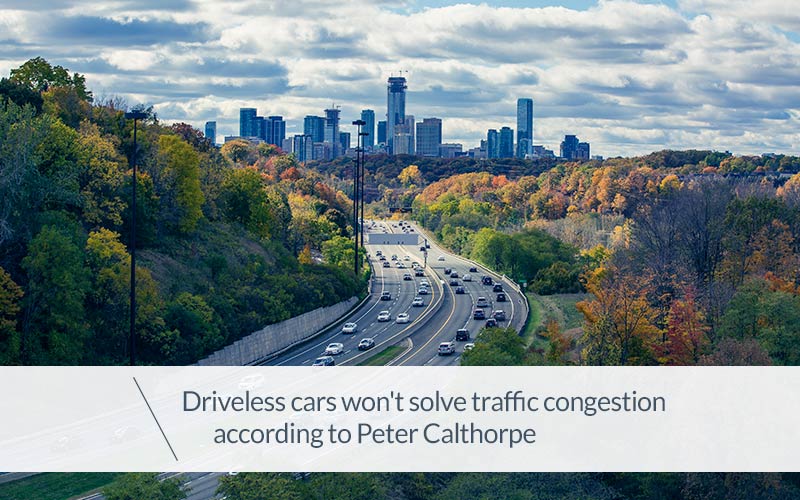
Peter Calthorpe, a famous city planner and a lead spokesperson for the New Urbanism movement, recently expressed some thoughts directly opposed to the usual Silicon Valley opinions, regards driverless cars.
According to Calthorpe, this technology will in fact not produce improved traffic flow, providing the long-wished-for reduction in road congestion.
His thoughts are really quite diverged from general opinion and have left many industry players quite confused.
However, by taking a closer look at his words, his point of view actually becomes very apparent.
The real risk of passengerless traffic
“Without pretty radically increasing the number of people per vehicle, autonomous systems will increase total miles travelled.”
Calthorpe's point of view, in brief, is as follows: to reduce road congestion, in particular in city centres, we need to reduce the number of vehicles circulating whilst increasing the average number of passengers transported in each one.
Indeed, the vehicles that flood onto our roads each day are occupied by just one person, the driver.
Autonomous systems, according to the founder of the Congress for the New Urbanism, will simply worsen the situation. It just makes it easier to “call” your car to meet you anywhere in the city rather than using public transport or car sharing/pooling systems.
His affirmations, however, do appear to support his urban-planning theories, rather than being based on concrete data.
To explain, New Urbanism is based on the development of eco-sustainable cities, where retail activities, employment and essential services are contained within a limited area, thus favouring walking or the use of public transport, and drastically reducing the number of circulating vehicles.
What does the data say regards autonomous vehicles?
As we mentioned before, Peter Calthorpe’s position, which we may or may not agree with, does not appear to be supported by data or by current forecasts available for automated cars.
According to a report published by Rethinking Transportation 2020-2030, it appears that the actual data related to the circulation of driverless cars is more than encouraging.
Before 2030, 95% of miles travelled by USA passengers will be in driverless electrically-powered vehicles.
These vehicles, however, will not belong to the users, but will be managed by businesses offering pick-up and on-demand services; a business model called “transport-as-a-service” (TaaS).
TaaS advantages
This new business model will have negative repercussions on the petroleum and automotive industries in general, including transport, compensated by the development of a new extremely profitable channel across the medium to long term, estimated to run to trillions of dollars.
For USA citizens this translates to an average saving of about $5,600 a year in transport costs, equivalent to a payrise of 10%.
The new revenue arising out of this saving can be injected into the economy in the form of spending or investments.
Conclusions
Returning to the statements made by Calthorpe, when he declared that autonomous vehicles will not resolve the problems of road congestion, data appears to offer a rather different view.
The report states that TaaS services will produce an increase of the average use of a single vehicle: each vehicle will be used approximately 10 times more compared to a private car, resulting in considerably fewer vehicles in circulation.
From an environmental point of view, this translates to a drastic fall in CO2 emissions, a substantial improvement in air quality and constantly decreasing dependence on coal.



